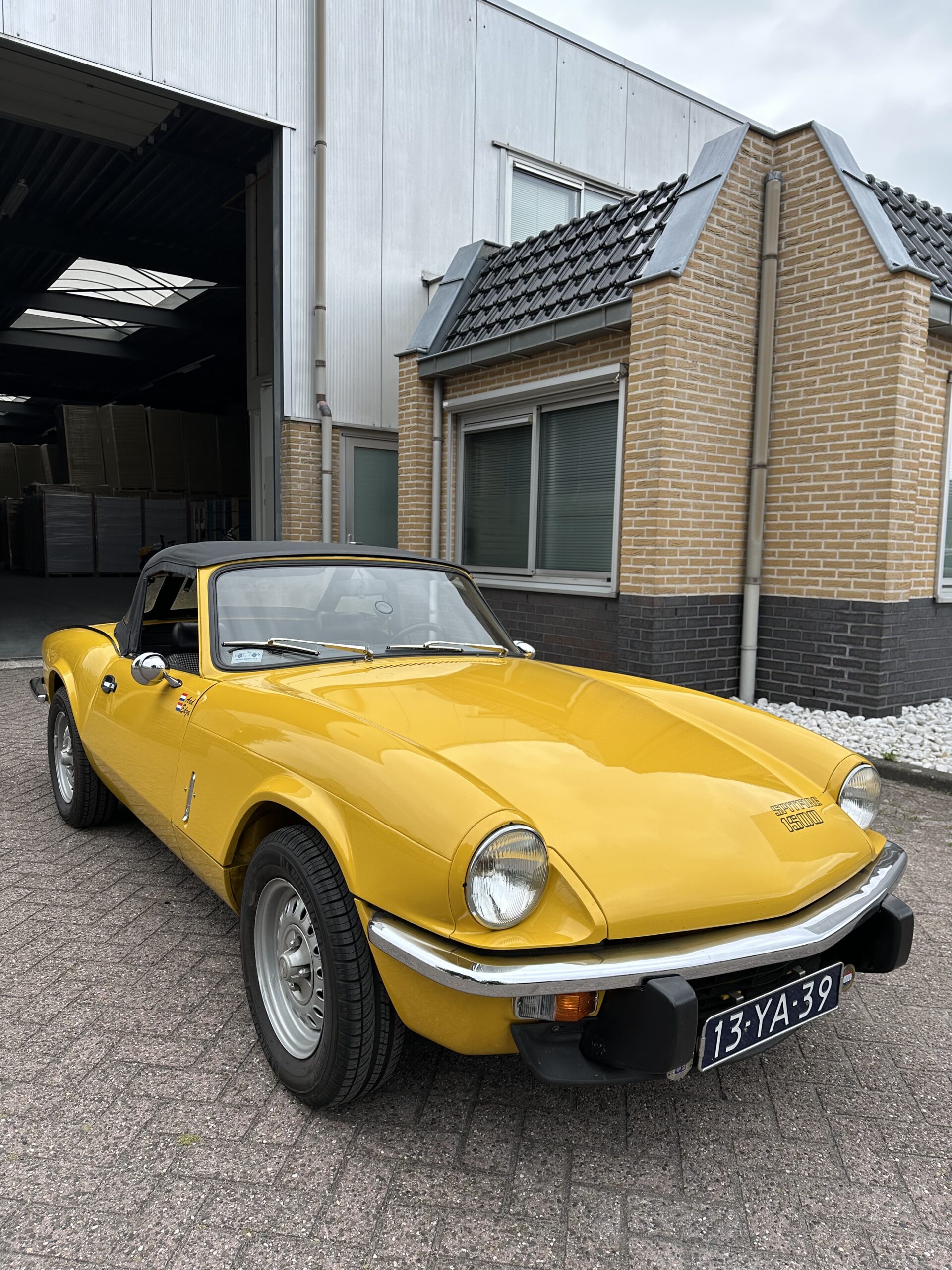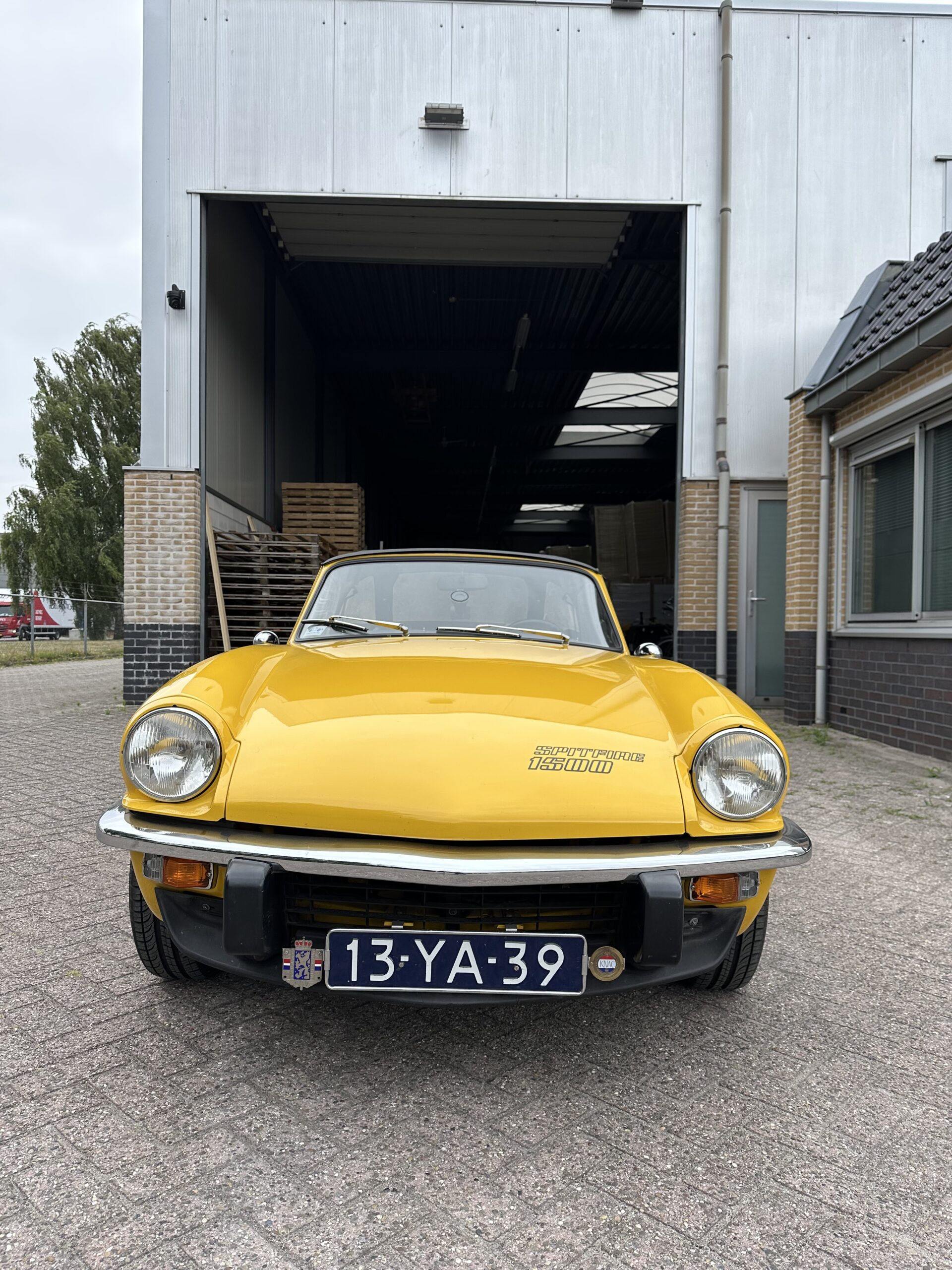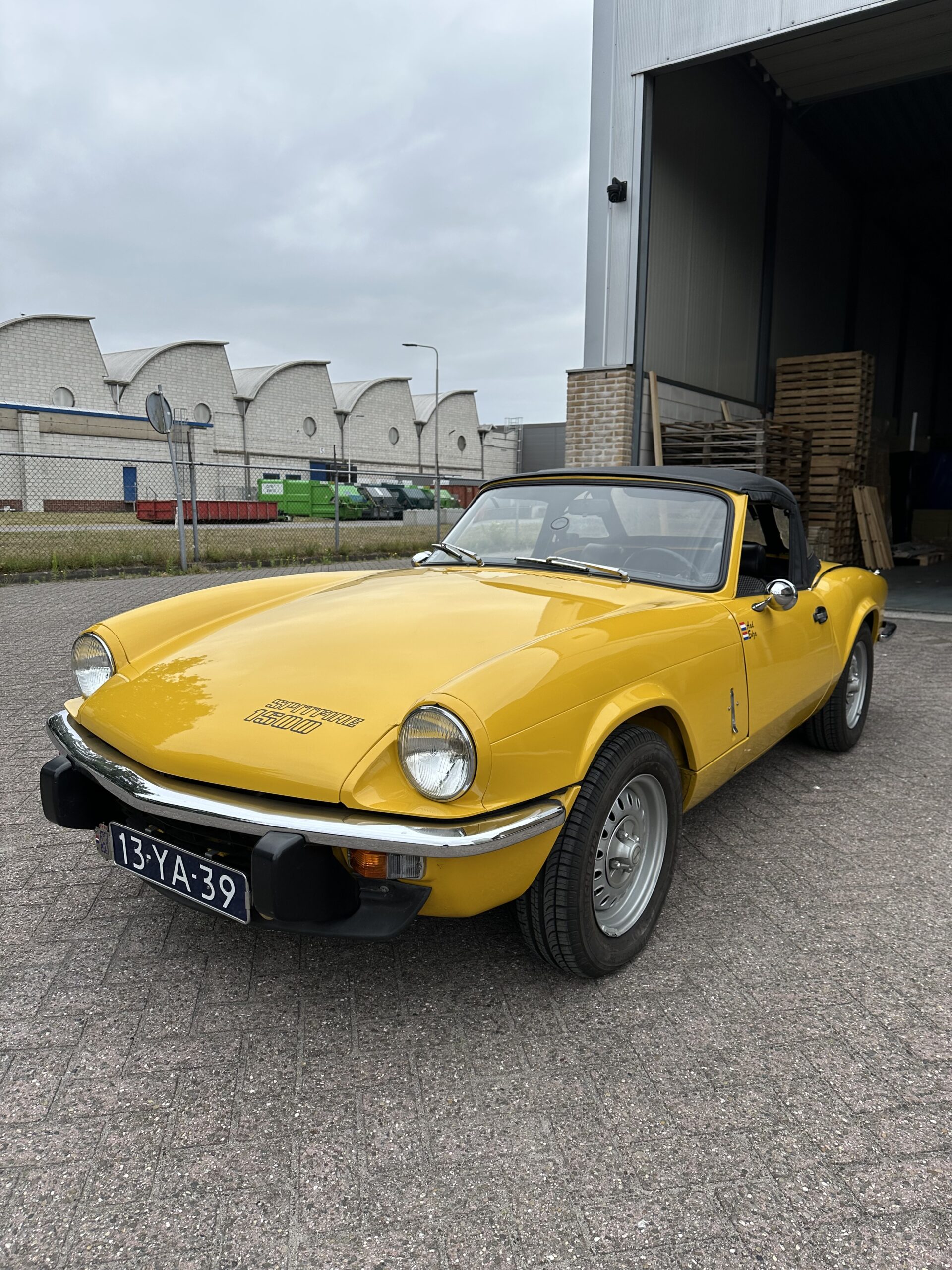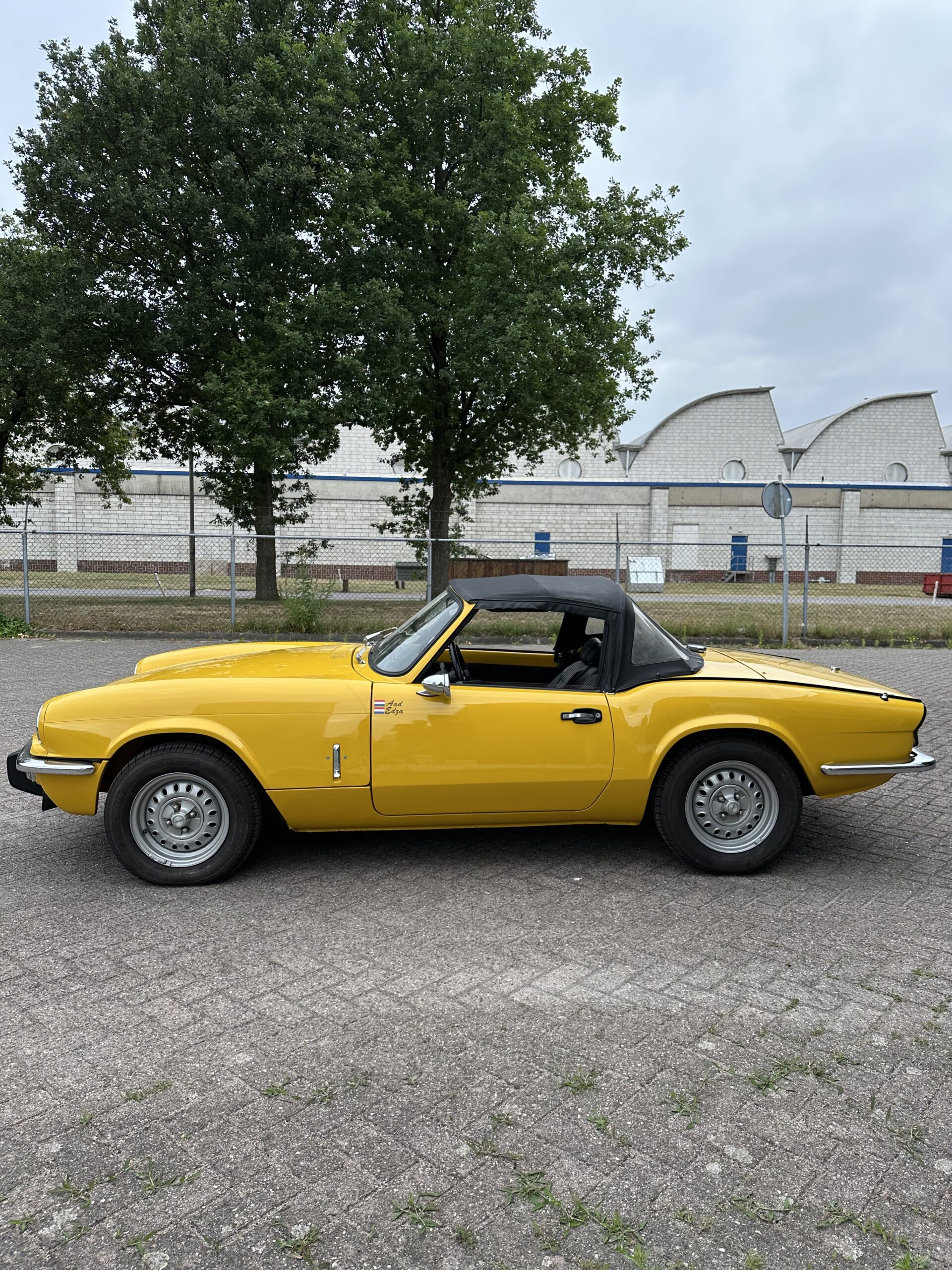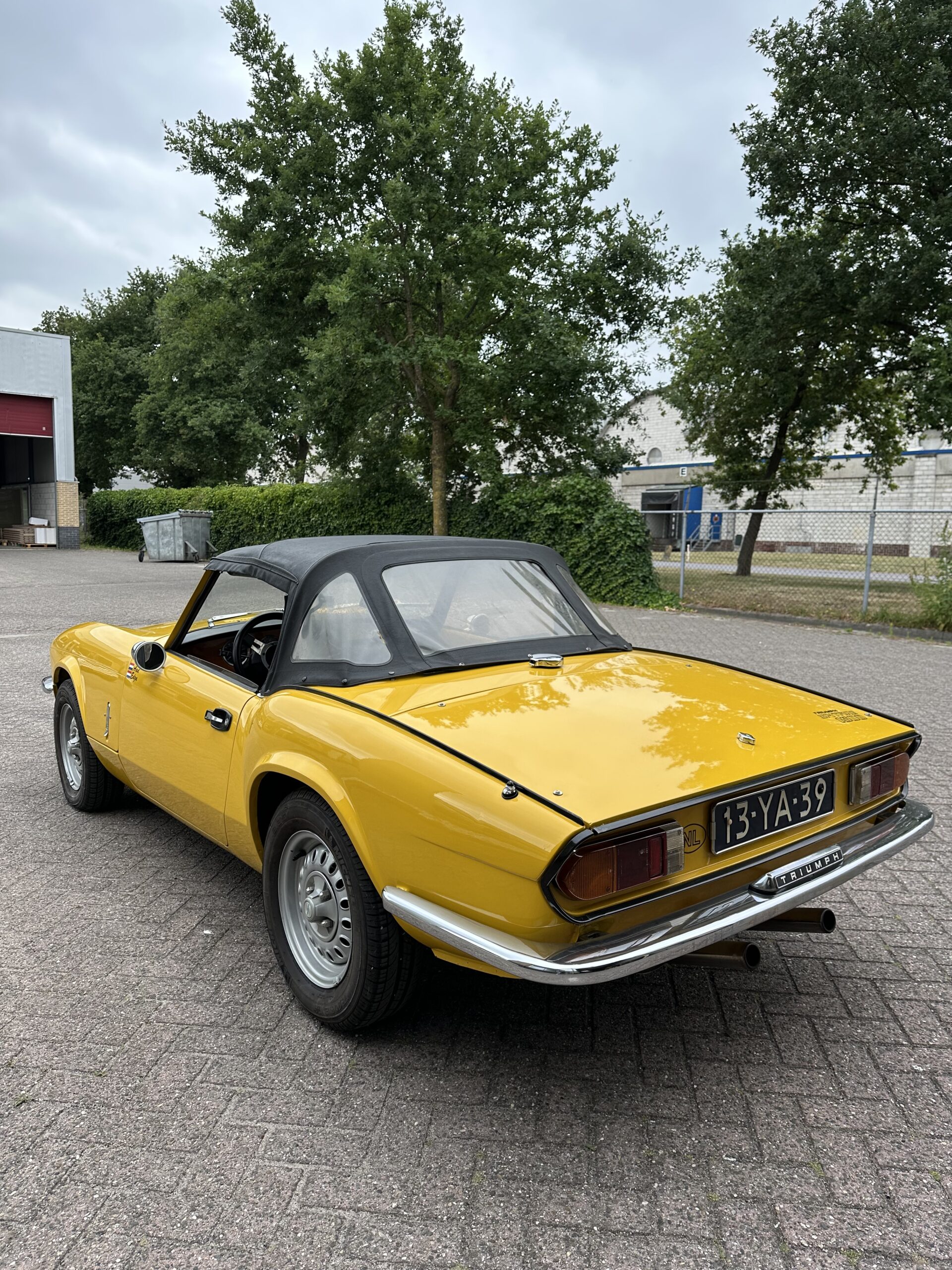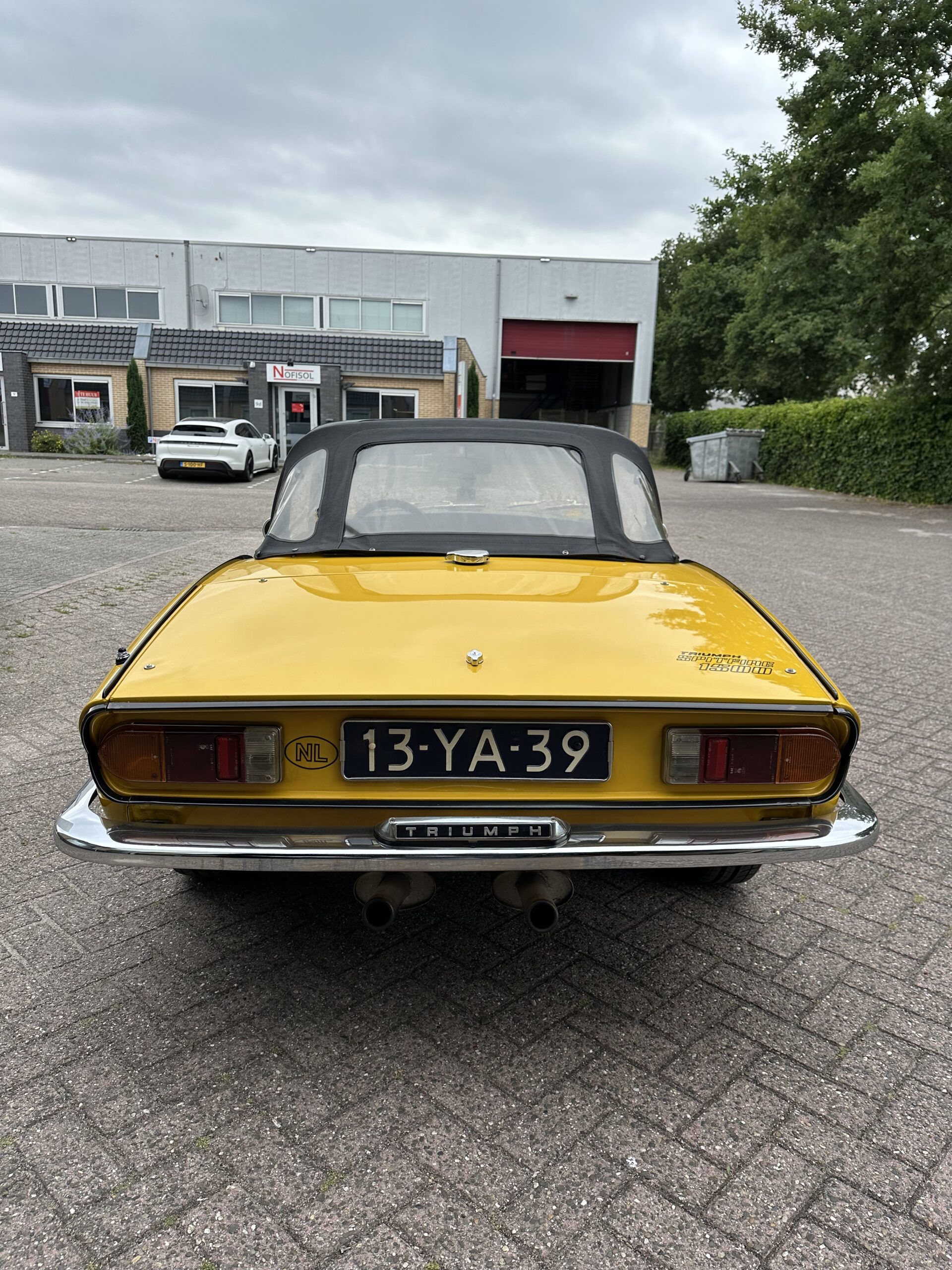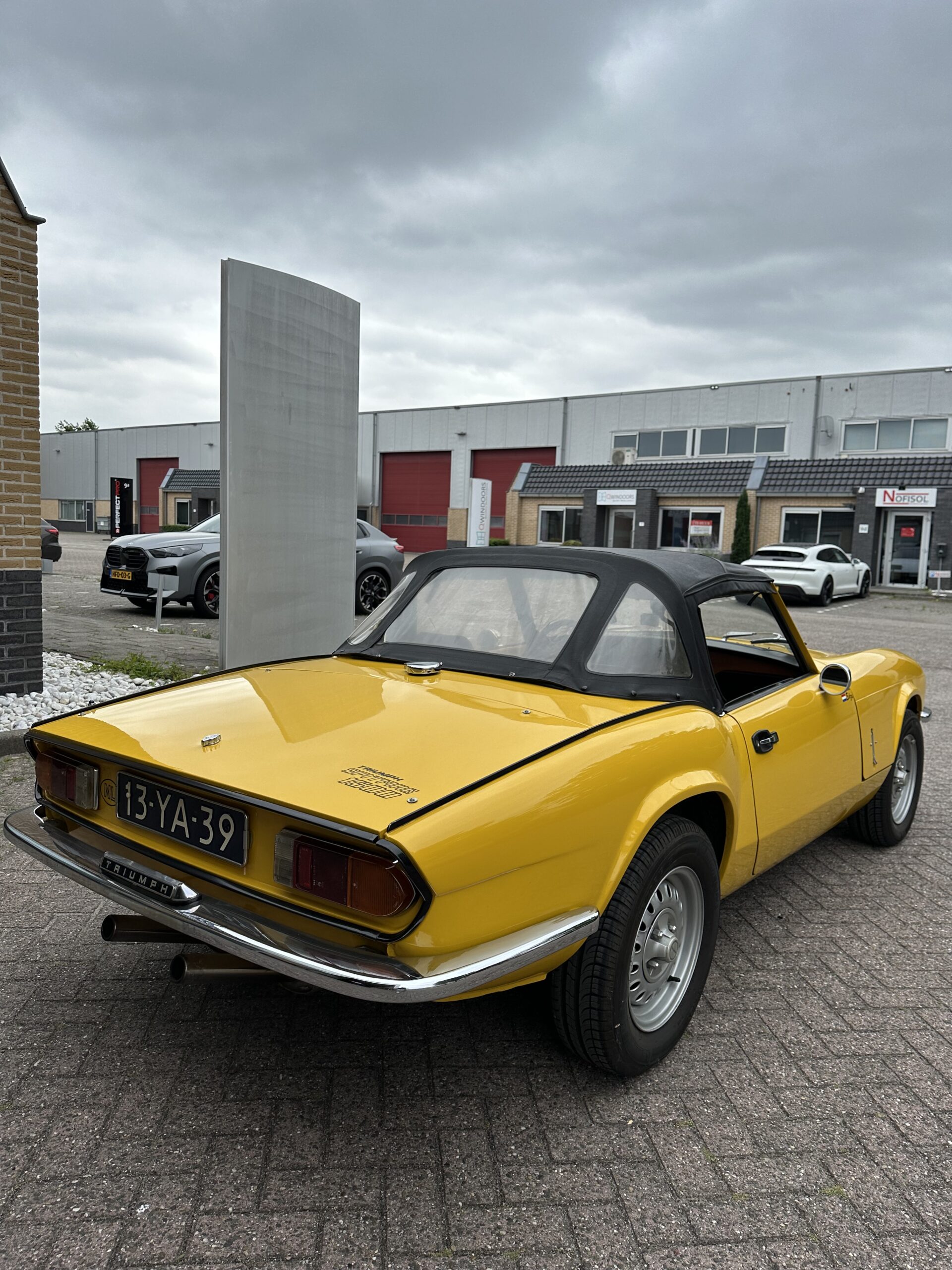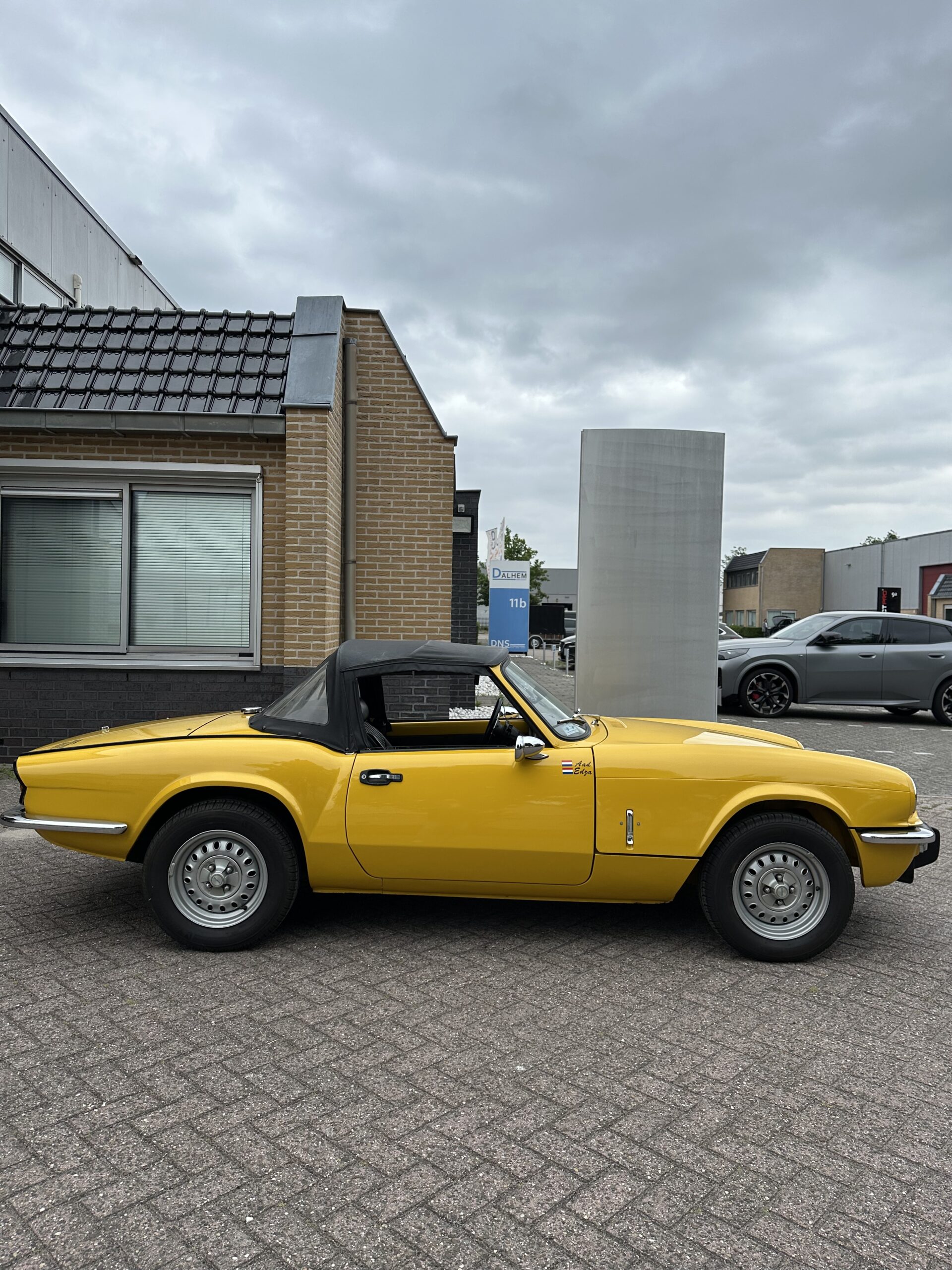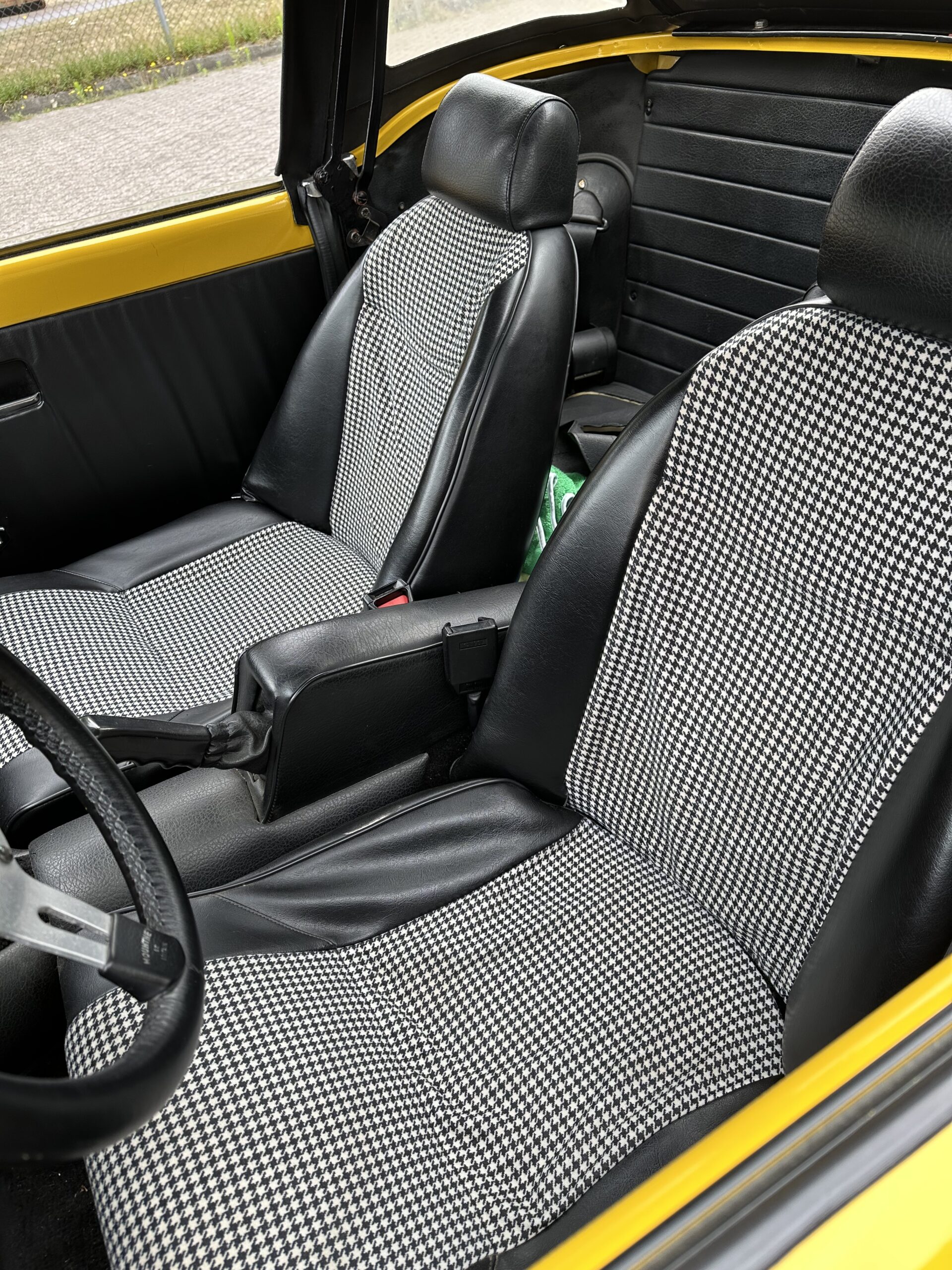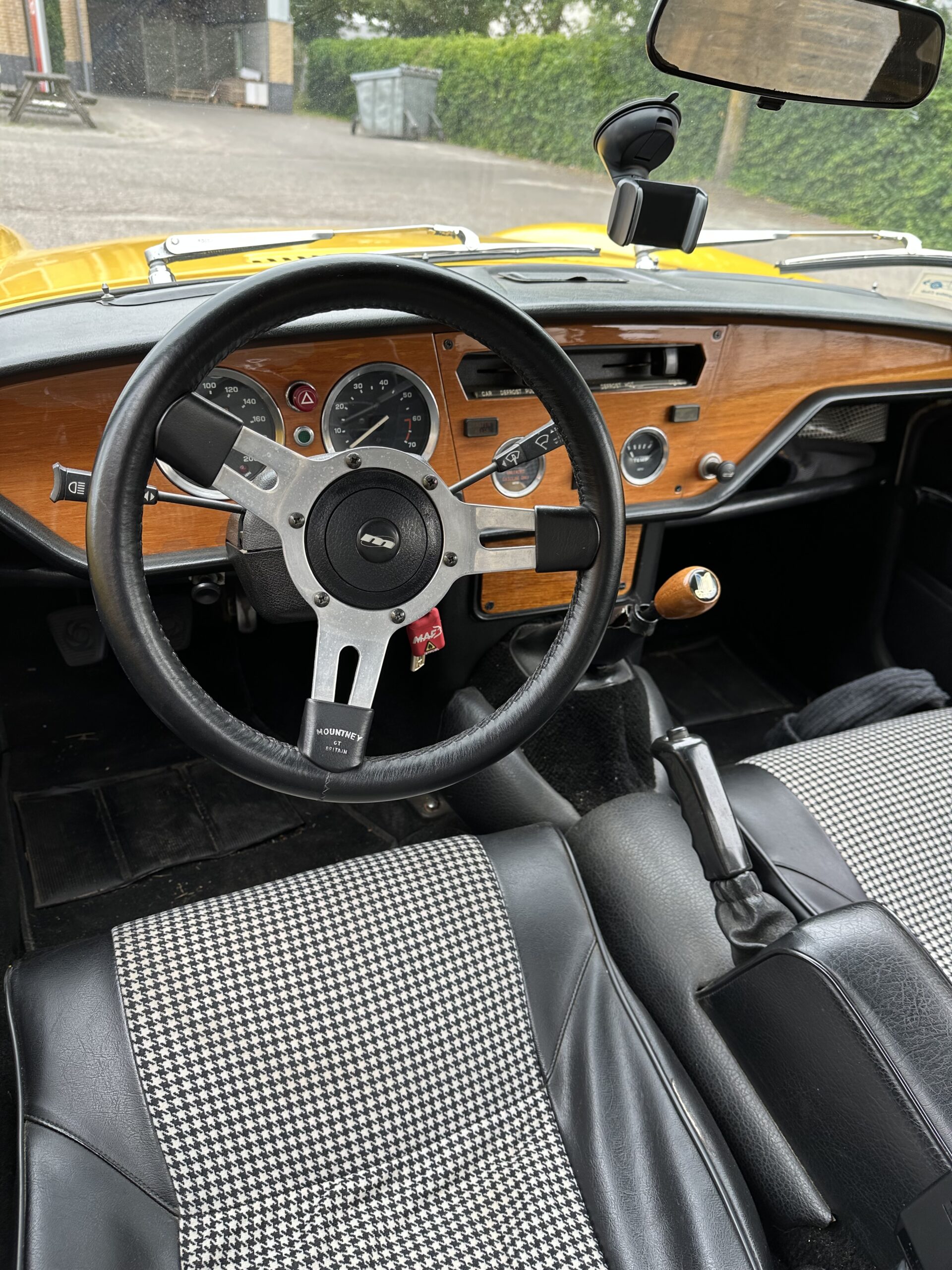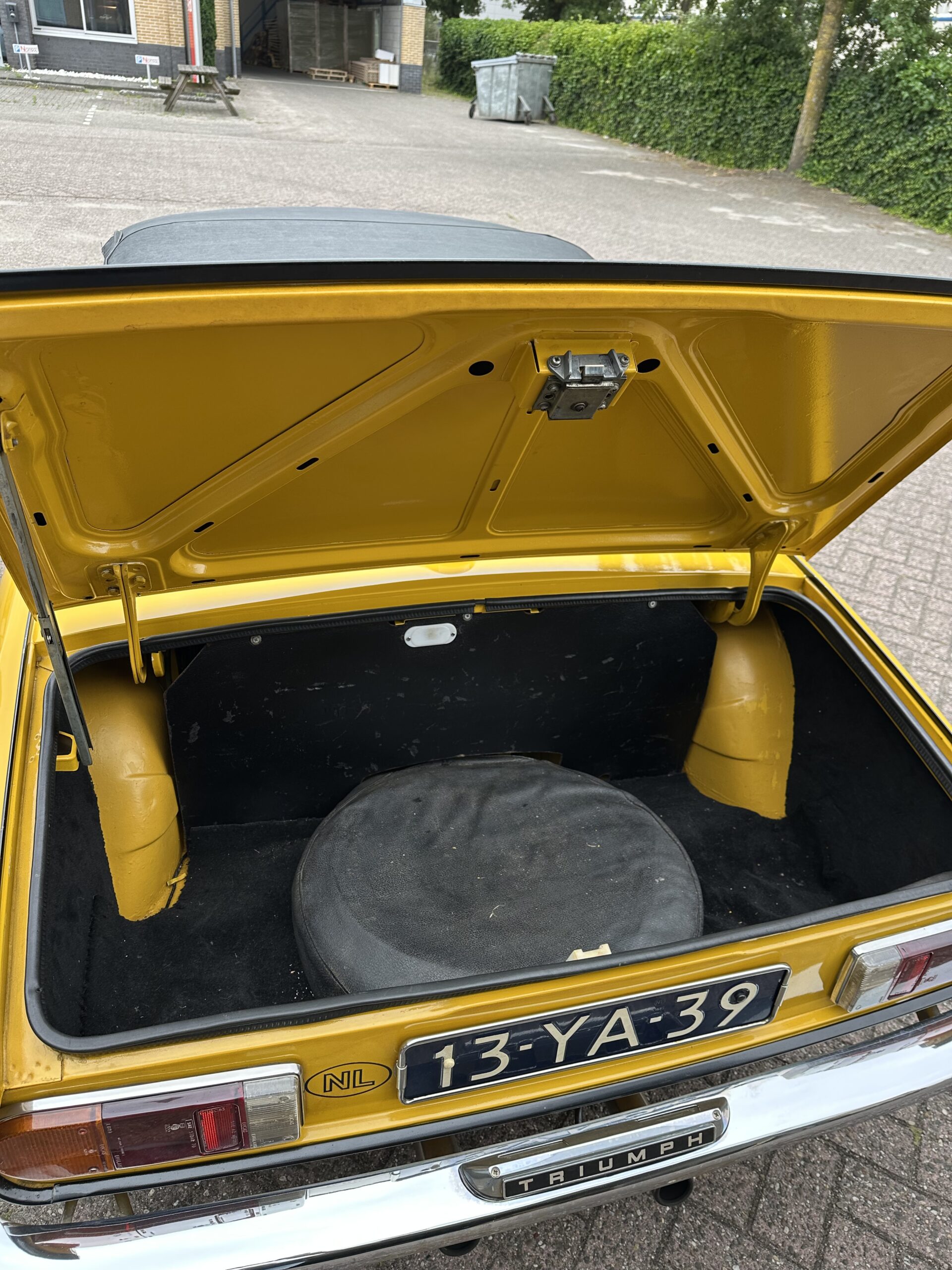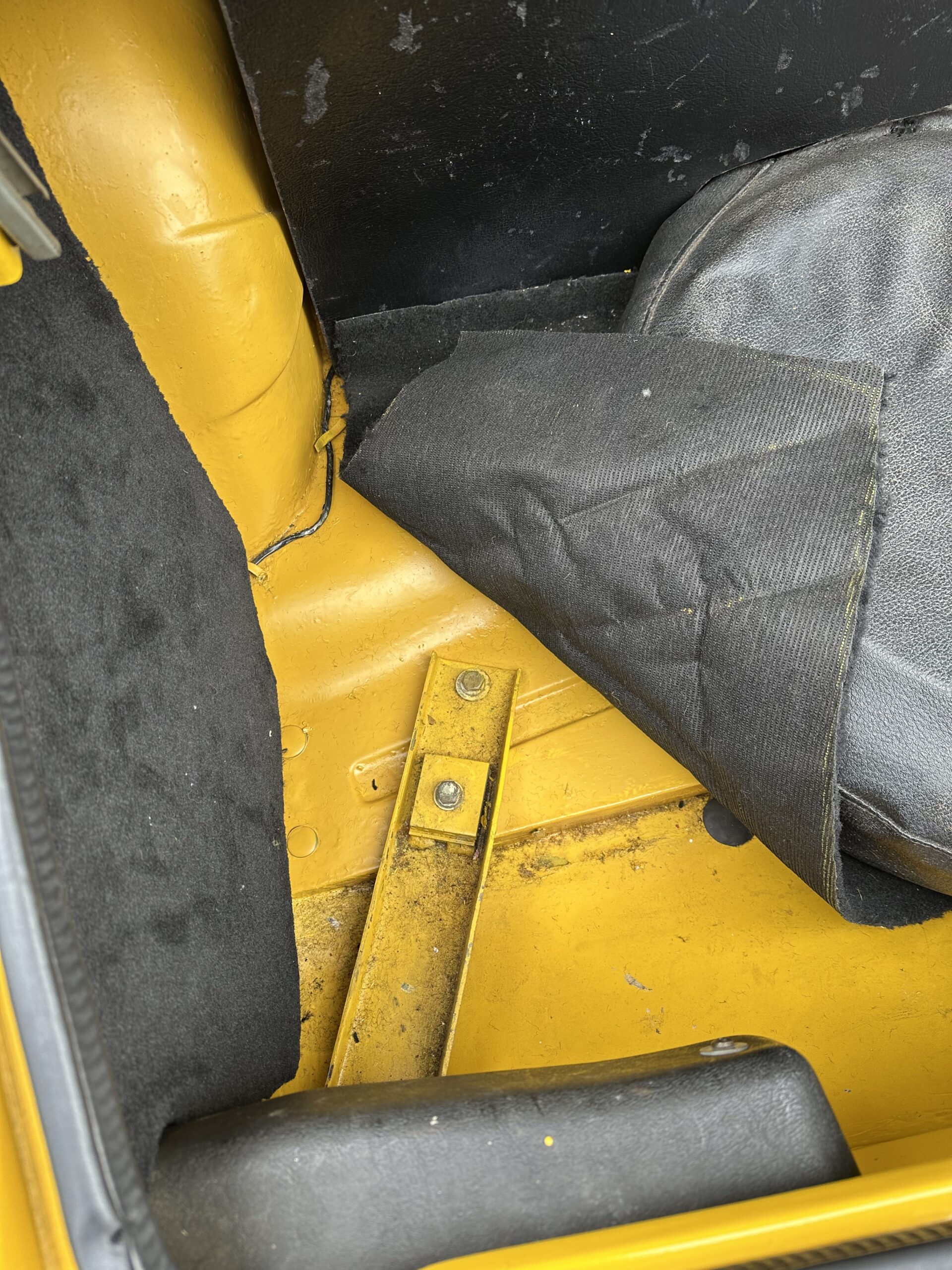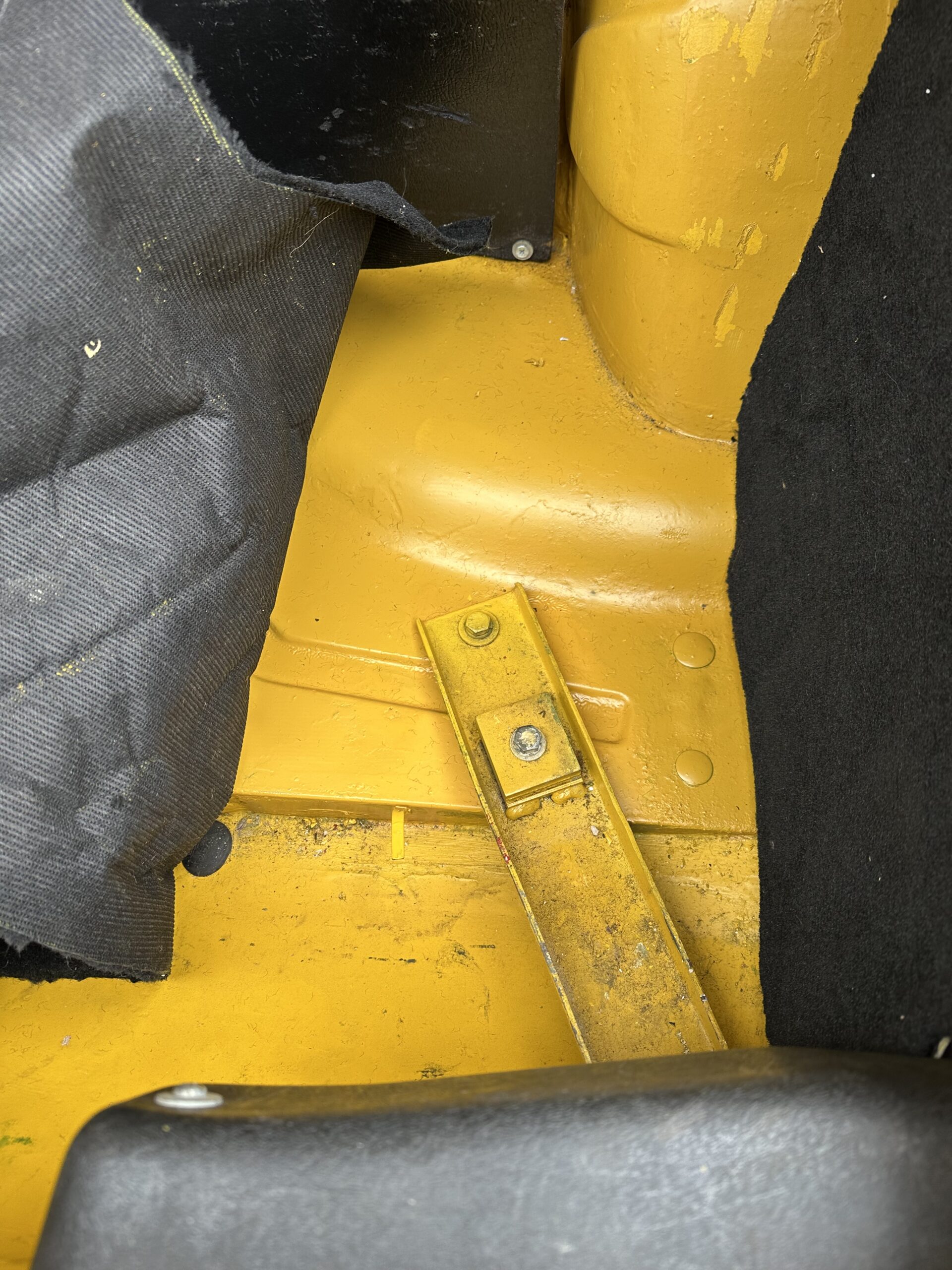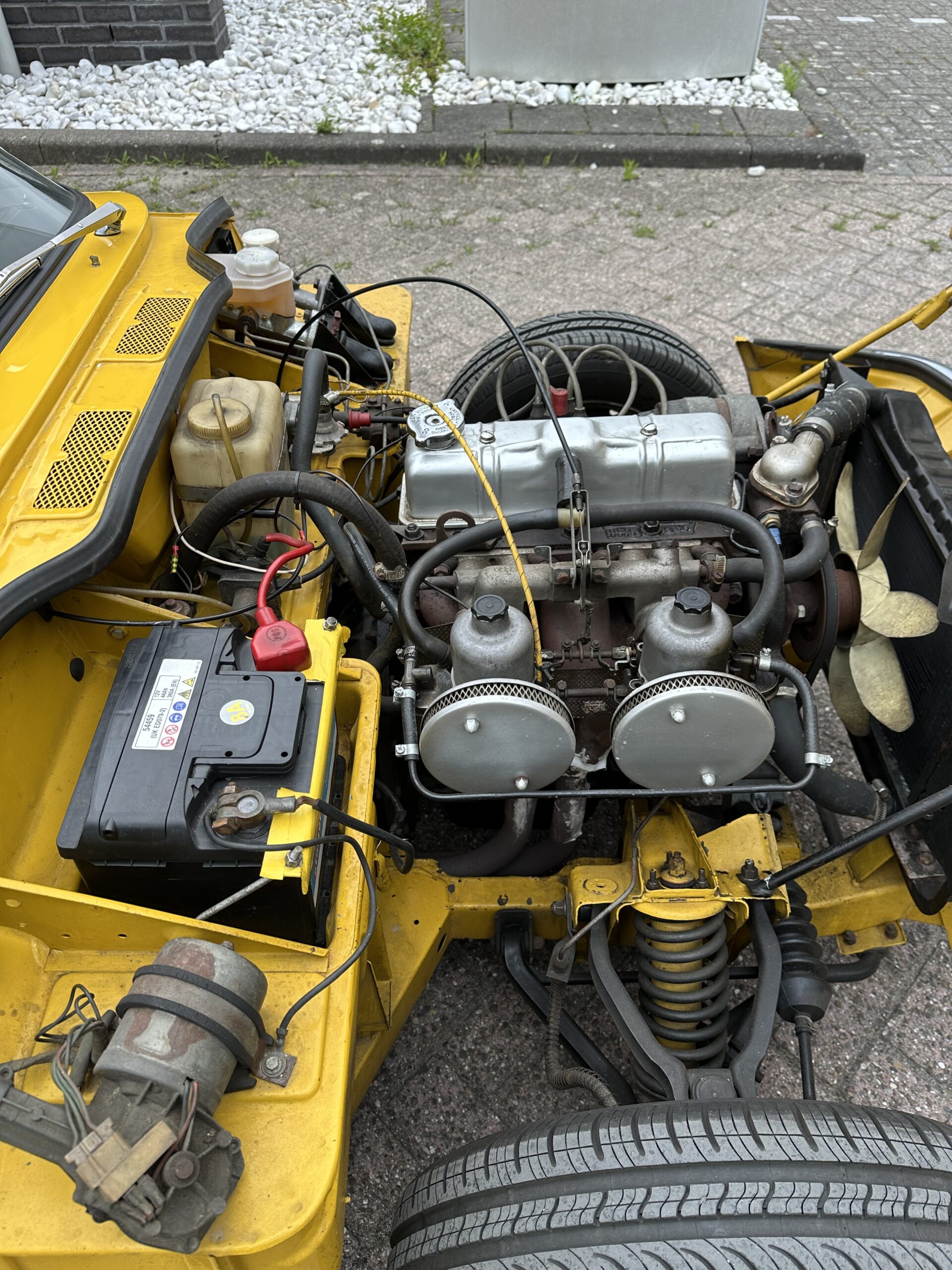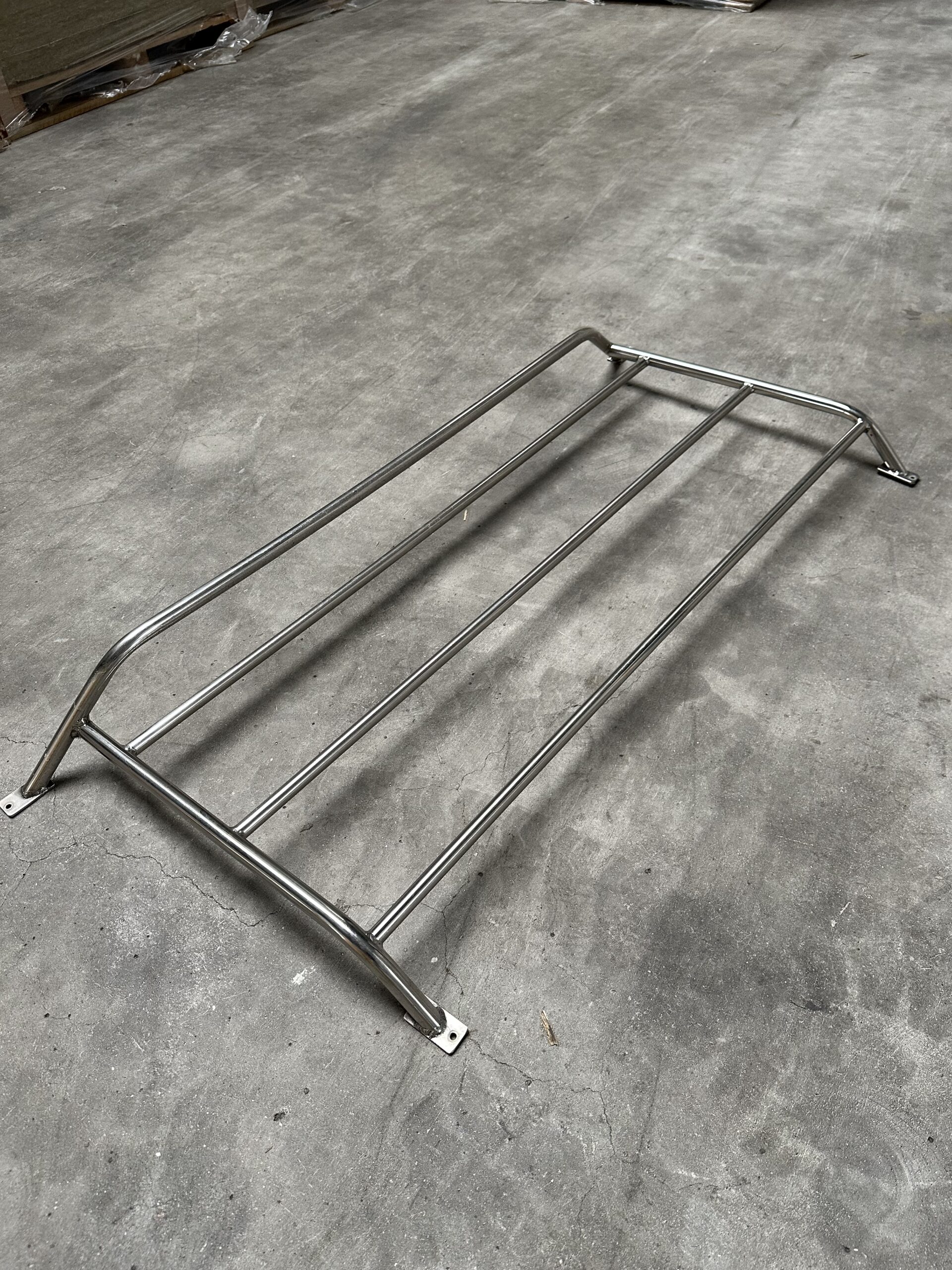Description
Triumph Spitfire 1500 | 1977
Highlights:
- Cheerful yellow paintwork with classic cabriolet styling
- 4-cylinder, 1493 cc petrol engine paired with manual gearbox
- Well-kept interior with original sporty seats
- Solid mechanical condition
- Documented history with long-term maintenance by Triumph specialist
The seller offers for sale this 1977 Triumph Spitfire 1500, presented in a bright yellow exterior that suits the lively character of this classic British roadster. Under the hood resides a 1493 cc four-cylinder petrol engine, mated to a manual transmission, embodying the traditional driving feel enthusiasts seek in classic sports cars. As a cabriolet, this Spitfire invites open-top motoring and offers the quintessential British roadster experience. The car is equipped with original sporty seats that remain a defining feature of its cabin, lending both period charm and a touch of sportiness to the interior.
The Spitfire has a well-documented ownership trail and had been maintained under his care for several years, with regular servicing and MOT checks. This provenance adds confidence regarding its care and mechanical reliability. It is a model cherished for its straightforward engineering, lightweight construction, and the engaging driving experience it delivers.
Externally, the bodywork is reported to be in good condition, with only minor dents or scratches present and potentially minimal paint correction required. The yellow paint retains a good shine, benefiting from regular polishing, although minor usage marks may be visible upon close inspection. Overall, the visual impression is tidy and attractive for a classic of this age.
Inside, the interior is presenting cleanly with minimal wear. The seller mentions gauges function properly, although the heater only operates on its warm setting—a typical quirk in older vehicles. The original cloth sport seats remain installed and continue to enhance the car’s period character. Small replacements might eventually be needed for minor items, but the cabin retains its vintage charm.
Technically, the car is in a solid state and holds a valid inspection.
The Triumph Spitfire has an interesting history, dating back to the early 1960s. It was introduced as Triumph’s answer to the burgeoning demand for affordable, small sports cars, positioned as a rival to the MG Midget and Austin-Healey Sprite. Styled by Giovanni Michelotti, the Spitfire arrived on the market in 1962, featuring elegant, flowing lines and a simple, lightweight construction. Its body sat on a separate chassis, a common engineering solution of the time, allowing Triumph to keep manufacturing costs low while still offering a sporty, attractive shape.
The Spitfire name itself evokes the famous British fighter aircraft of World War II, suggesting agility and spirited performance. Over the years, the model evolved through several series, each bringing incremental improvements in performance, comfort, and styling. By the time the Spitfire 1500 was launched in 1974, the engine size had grown to 1493 cc, providing more torque and making the car more usable on modern roads while still maintaining its playful handling. The 1500 was the final and most powerful version of the Spitfire, and it enjoyed modest success in various markets, particularly in the US where demand for affordable British sports cars was strong.
Despite its sporty pretensions, the Spitfire was designed to be approachable and relatively easy to maintain. This made it popular with enthusiasts who wanted an authentic sports car experience without the costs associated with more exotic brands. Its simple mechanics and abundant parts availability mean that Spitfires remain popular classics today, enjoyed both for leisurely drives and for participation in classic car events. The Spitfire’s design is often praised for its clean lines, low stance, and the unique feature of a forward-tilting bonnet that offers excellent engine access—a boon for maintenance.
This Triumph Spitfire 1500, being a later example, benefits from the final refinements of the model line. It captures a moment in British automotive history when lightweight sports cars were built with pure driving enjoyment in mind. For collectors and enthusiasts alike, the Spitfire offers an engaging way to connect with classic motoring heritage.
Condition of the Bodywork and Paint
4. Very Good: Small dents or scratches; may require minimal bodywork or paint correction.
Condition of the Interior
4. Very Good: Clean with minimal wear; may need minor replacements for small missing or broken parts.
Technical Condition
4. Very Good: Mechanically solid, with possible minor maintenance required.
Overall Condition
4. Very Good Condition: Shows only minimal wear and is ready to drive at any time.
This item is sold on an as-is basis. The condition of this item is the opinion of the seller and may differ from your own opinion. Photos and descriptions of the listing are for information purposes only.
We encourage all potential bidders to inspect the vehicle before placing a bid. Please contact us by phone or email to schedule an appointment.
All auction cars offered have a reserve price. You have only won the item if the seller accepts your bid.
Price changes and errors reserved. The 14-day right of withdrawal does not apply to this auction.
This car is currently located in North Brabant province, the Netherlands.
This car drives, brakes and shifts.
The car has a Dutch registration. The buyer is responsible for registration in his own country and responsible for delivery and collection of any vehicle purchased at the auction.
The description of this car is, to the best of the seller’s knowledge, accurate and not misleading. Route 66 Auctions requests a range of detail about the car from the seller and performs a level of due diligence. However, potential buyers must independently satisfy themselves as to the accuracy of the description. We strongly advise potential buyers to view or arrange inspections as well as conduct any research they feel is necessary before committing to bid or buy.
Please note that it is not uncommon for classic or collectible cars to have received cosmetic repairs in the past, to rectify damage or refresh appearance, and this work may be hard to see even upon visual inspection. Unless there is an explicit statement by the seller to the contrary, please assume that any vehicle could have had bodywork or paintwork. Photographs may not reflect the exact true colour or exact full condition of the vehicle. It is a bidder’s responsibility to assure themselves of the colour and condition of a vehicle, including its interior and the existence of any remedial bodywork or paintwork, before committing to bid or buy.

